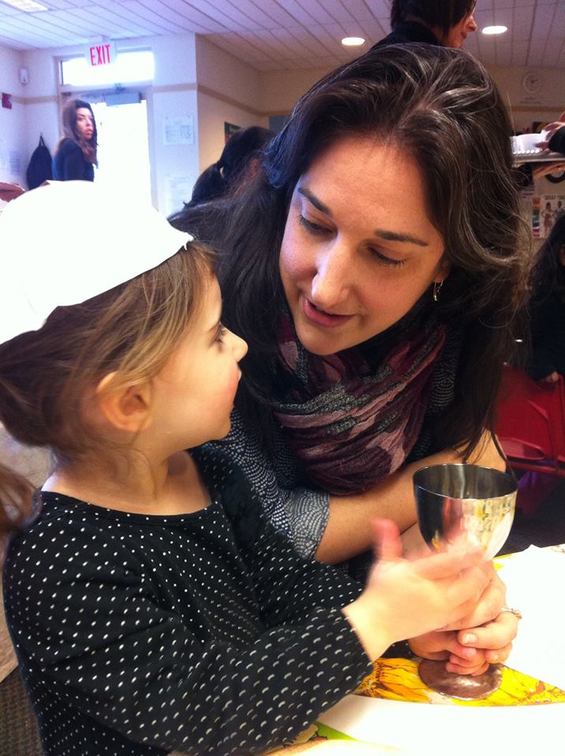Jewish holiday food is very literal. At Passover, charoset is the mortar between the bricks of the pyramids. At Shavuot, tightly rolled blintzes are the Torah scrolls. So it’s no surprise that Purim has its own representational food—hamantashen, or oznei haman, are said to represent Haman’s hat, ears or pockets, depending on your tradition. By eating these delicious treats we are blotting out Haman, just as we boo and yell when we hear his name during the reading of the Megillah or during a Purim shpiel (play).

Because of the flexibility of hamantashen dough, really anything goes in terms of fillings. I think the best recipe for traditional hamantashen is Joan Nathan’s, and I love the idea of filling them with whatever your family likes best. Making them is an activity that can even be done with the youngest children in your house, or at least the ones old enough to eat cookies! Once the dough is made, rolled and cut (all activities that your kids can participate in), set up a station with ramekins full of different types of jam or jelly, chocolate chips, raisins or whatever you prefer. Once the cookies are baked, you can rate your favorites or try to guess what’s inside before you bite into them.
For a totally different twist on hamantashen, why not try something savory? The Nosher suggests a delicious caramelized onion-filled rosemary cookie. Yum! The food tradition of Purim extends beyond the cookie-eating to putting together baskets of treats for our loved ones, called mishloach manot. Once your family bakes up a storm, wrap up some cookies and bring them to your friends and family. You can even make your own baskets to fill.
On Purim we are also obligated to give food to the less fortunate, and this is a great opportunity to link the mitzvah (good deed) of tzedakah (charity) to our holiday celebrations. Consider donating food to Family Table and having your children participate by picking out a few canned goods the next time you’re at the grocery store. As your children get older, volunteering at a food bank is a great way to help others while spending time with your family.
While you’re already in the kitchen, take a look around to see what you can repurpose for a gragger (noisemaker). I love these ideas from Pinterest: using wooden spoons to act out the Purim story; paper-towel roll graggers filled with rice or dry beans; and a homemade band-in-a-box to use as a gragger also.
Getting your kids in the kitchen may seem daunting at first, but once you start incorporating them into your routine, I’m sure you’ll realize how much it enhances all of your holiday food preparations.
Sarah Ruderman Wilensky is an experienced Jewish educator and founder of JewFood. She specializes in teaching about Jewish identity, holidays and culture through food, and has worked with every age group, from toddlers and preschoolers to elementary school students, teens, adults and families. Sarah is a Jewish educator at the Jewish Community Centers of Greater Boston and runs the families with young children program at Congregation Beth El of the Sudbury River Valley. She lives in Newton with her husband, two young children and cat, Brisket.

